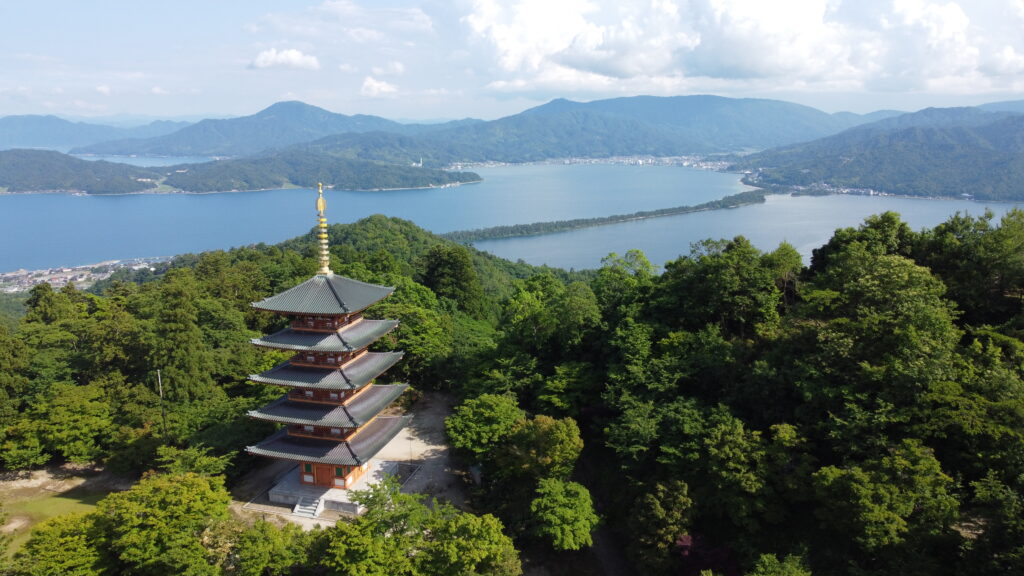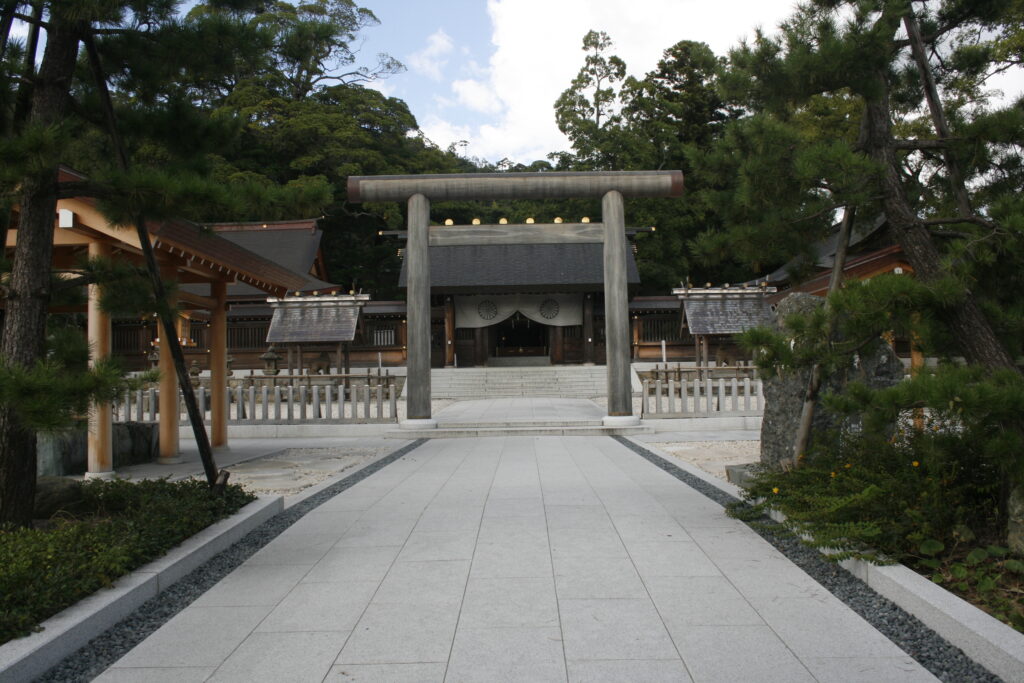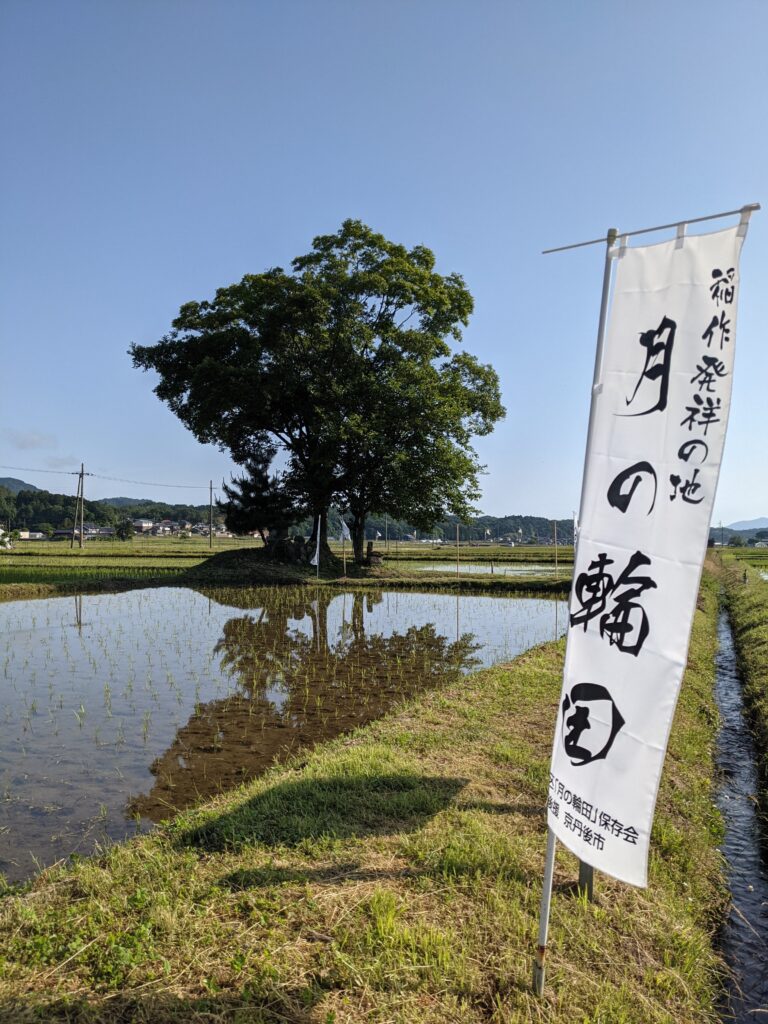Amanohashidate, Miyazu
Located in the scenic region of northern Kyoto, Amanohashidate is a 3.6km-long sandbar spanning the mouth of Miyazu Bay. Densely forested with thousands of pine trees, and silhouetted by white sand beaches, the picturesque sandbar has inspired Japanese scholars, artists, and landscape garden designers for centuries, and is today considered one of the Three Scenic Views of Japan.
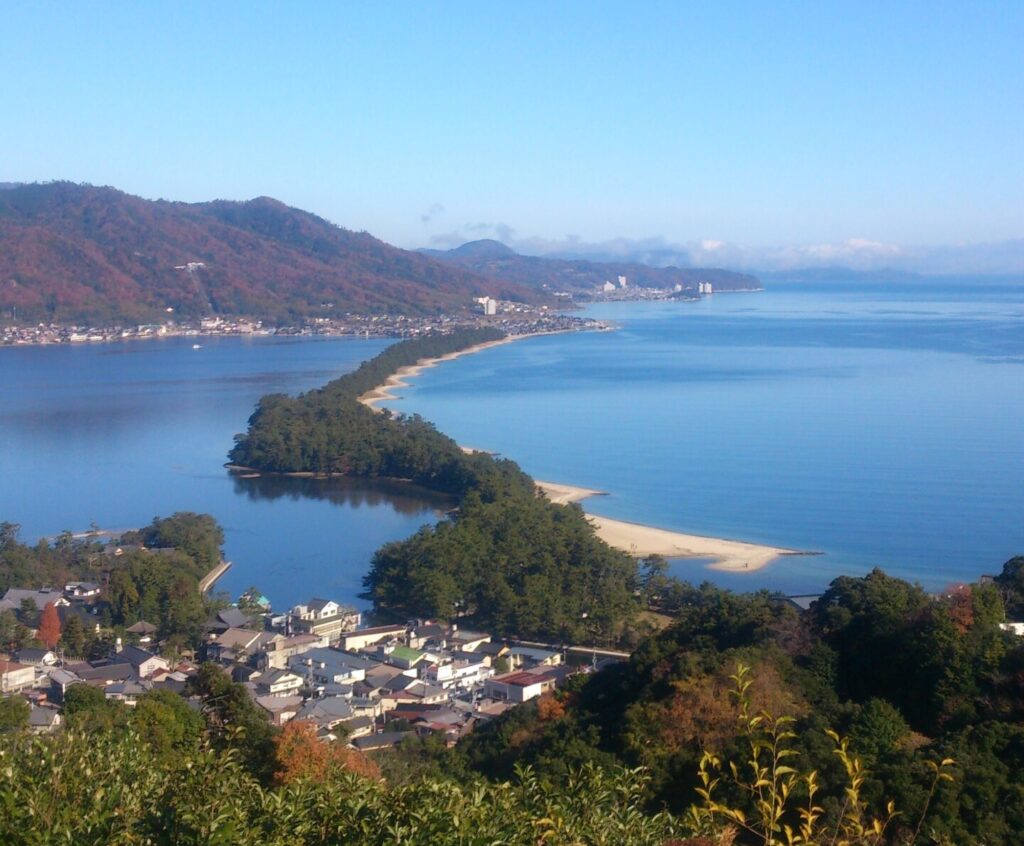
The myth associated with Amanohashidate is central to this fascination. Japan’s creation myth centres on the goddess Izanami and the god Izanagi, whose divine coupling led to the birth of this land. The Tango Fudoki, early historical chronicles of the Tango region, tells a story of how Izanagi used a ladder, or the ‘floating bridge of heaven’ (Ama-no-Ukihashi), to visit Izanami on earth. It is unclear whether he tripped over the ladder, or whether it simply toppled over, but it fell out of the sky into the sea, becoming Amanohashidate. The minor detail of their being siblings notwithstanding, this folk tale is how the sandbar has come to be known as an auspicious place for lovers.
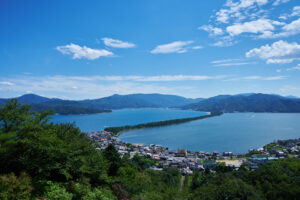
Amanohashidate
Amanohashidate is one of the “Three Most Famous Views in Japan.” The Amanohashidate sandbar is a natural land bridge described in legend as having been created by the deity Izanagi-no-mikoto as a path …
Besides walking along the sandbar, visitors usually partake in mata-nozoki: looking at Amanohashidate upside-down from between your legs. Heaven and earth are inverted, and the sandbar transforms into a magnificent dragon snaking through the sky. This is known as hiryūkan, or ‘view of the flying dragon.’ Amanohashidate View Land and Kasamatsu Park both offer excellent views of the sandbar as well as the bay.
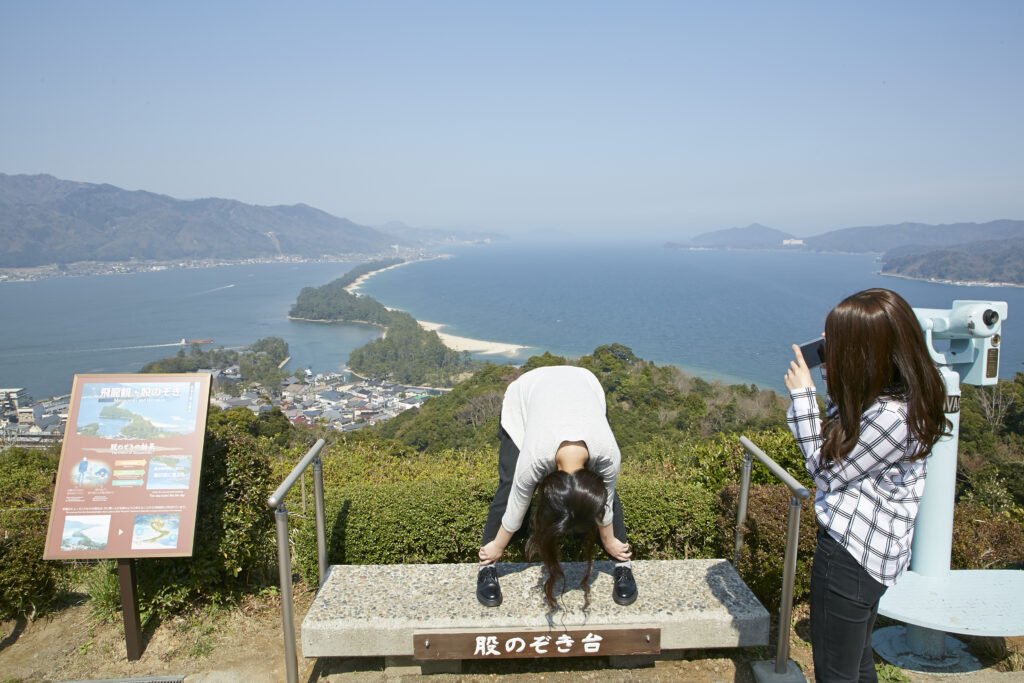
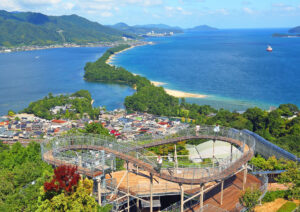
Amanohashidate Viewland
Amanohashidate Viewland is located on top of Mt. Monju, and can be reached via cable car or chair lift. The cable car chair lift is only a short walk from Amanohashidate Station, making it an easy way …
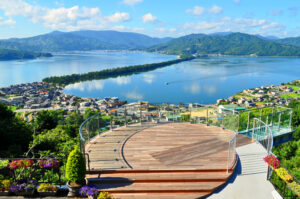
Kasamatsu Park
Kasamatsu Park is one of the two overlooks perfect for viewing Amanohashidate, one of Japan’s Three Scenic Views. The park is located halfway between Motoise Kono Shrine and Nariai-ji Temple, and is a …
